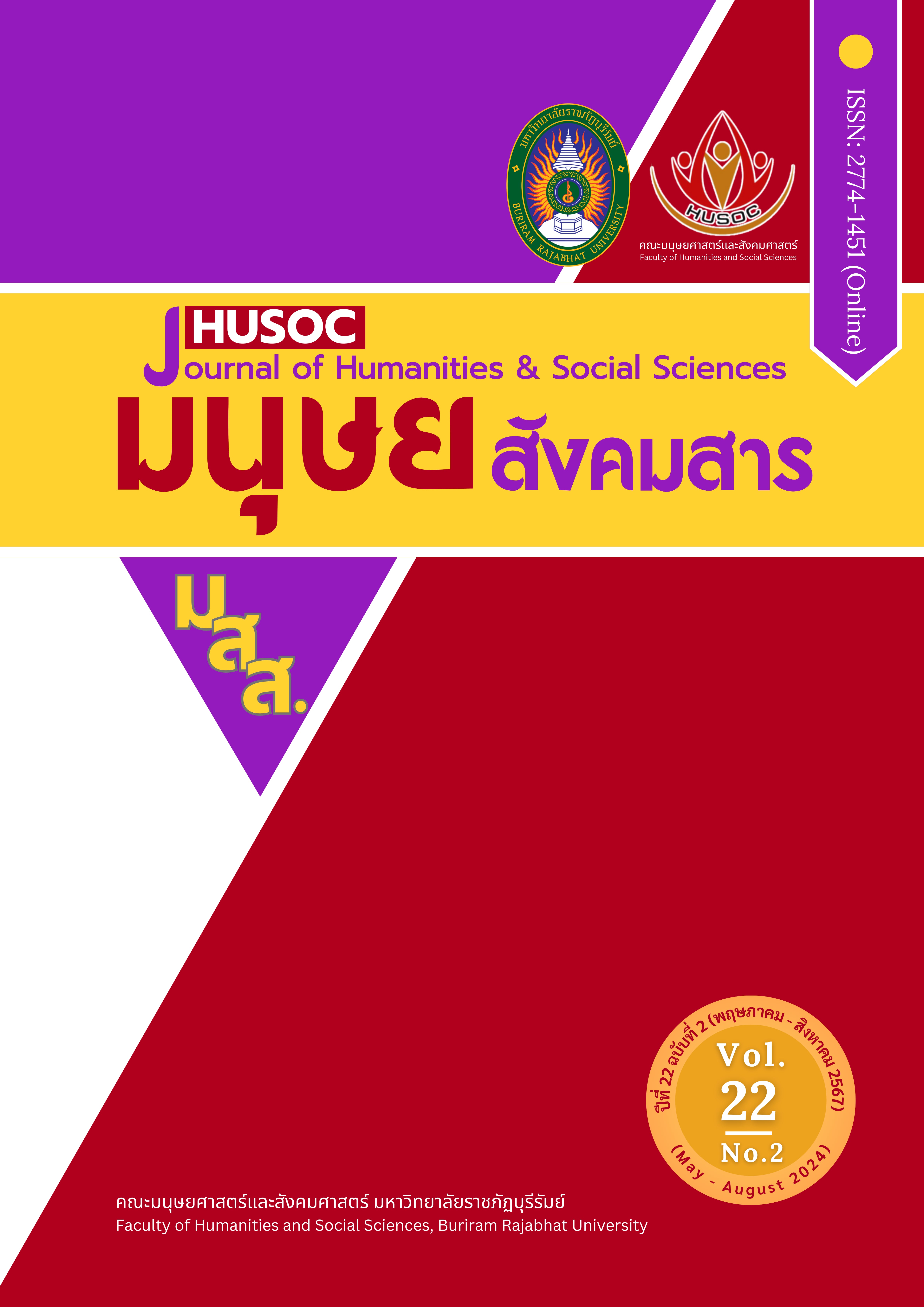Economic Development of The Indigo-dyed Weaving Community the epidemic situation of Covid-19 in Wanonniwat District and Banmuang District, Sakon Nakhon Province
Main Article Content
Abstract
The objective of this research was to study and develop the value creation of products along the dyeing textile production chain of farmers in the context of the COVID-19 disease. The targeted group was selected specifically, which consists of 59 textile dyeing producers in Wanon Niwas and Ban Muang districts, Sakon Nakhon province. The mixed-method research was employed in this research. The results of study from local context were the stability of indigo dyeing water, with a proportion of lye and tamarind water at 1:2:2, the developed dyeing powder by reducing nanoparticles with a pin mill, mixing with a reducing agent in powder form which can be stored for a long time with simple usage. The development of weaving fabrics expanded to 2.50 meters and suitable for developing various textile products. The development of cutting and sewing skills with three-dimensional sewing techniques makes the products unique, high value, and can be sold through online markets. From the study, the average income before participating in the project was 6,533.33 baht/person/month and after the end of the project, the average income was 14,408.77 baht/person/month which increased by 7,875.44 baht/person/month or by 50.92 percent.
Article Details

This work is licensed under a Creative Commons Attribution-NonCommercial 4.0 International License.
เนื้อหาและข้อมูลในบทความที่ลงตีพิมพ์ในวารสารทดสอบระบบ ThaiJo2 ถือเป็นข้อคิดเห็นและความรับผิดชอบของผู้เขียนบทความโดยตรงซึ่งกองบรรณาธิการวารสาร ไม่จำเป็นต้องเห็นด้วย หรือร่วมรับผิดชอบใดๆ
บทความ ข้อมูล เนื้อหา รูปภาพ ฯลฯ ที่ได้รับการตีพิมพ์ในวารสารทดสอบระบบ ThaiJo2 ถือเป็นลิขสิทธิ์ของวารสารทดสอบระบบ ThaiJo2 หากบุคคลหรือหน่วยงานใดต้องการนำทั้งหมดหรือส่วนหนึ่งส่วนใดไปเผยแพร่ต่อหรือเพื่อกระทำการใดๆ จะต้องได้รับอนุญาตเป็นลายลักอักษรจากวารสารทดสอบระบบ ThaiJo2 ก่อนเท่านั้น
References
Ampansirirat, A., Wongchaiya, P. (2017). The Participatory Action Research: Key Features and Application in Community. Journal of Humanities and Social Sciences. Mahasarakham University, 36(6), 192-202.
Arthan, S., Lasopa, S. (2018). The development of Indigo Dye dyeing of cotton Fabric in Sakon Nakhon province by the chemical process [Research report]. Sakon Nakhon Rajabhat University. [in Thai]
Bunchai, K. (2020). A study on socio-economic impact assessment and adaptation of rural communities against the COVID 19 epidemic [Research report]. King Prajadhipok's Institute. [in Thai]
Intachai, S. (2020). Aerators with Indigo of productivity Indigo paste for Indigo Dyed cloth producer group. The 34th Conference of Mechanical Engineering Network of Thailand. Huahin: Prachuap Khiri Khan. [in Thai]
Keativipak, K. (2020). Study and Development Applies Products from Cotton Hand Made to Products Design, Case Study: The Cotton Hand Weaving Groups at Donluang Village, Amphur Pasang, Lamphun Province. The Fine & Applied Arts Journal, 11(1), 13-51. [in Thai]
Kunpluem, P. (2021). Business adaptation after the COVID-19 era. Journal of Politics, Administration and Law. Burapha University, 12(2), 99-110. [in Thai]
Saitong, A. (2006). Seminar on techniques for preparing indigo and natural indigo dyeing. Sakon Nakhon Rajabhat University. [in Thai]
Senathum, P. (2021). Strategic adaptation of local Mau-Hom cloth entrepreneurs during the Covid-19 pandemic in Phrae province [Research report]. Mae Fah Luang University. [in Thai]
Sittigul, S. (2014). Isolation, identification and microbial inoculum production for using in Indigo dyeing. Pibulsongkram Rajabhat University. [in Thai]
Sukkhamnert, D. (2021). Lecture documents on economic inequality analysis. Kasetsart University. [in Thai]
The Sakon Nakhon Provincial. (2021). Sakon Nakhon Province 5-year development plan. [in Thai]


